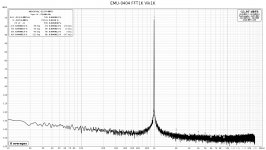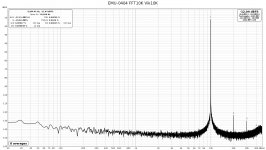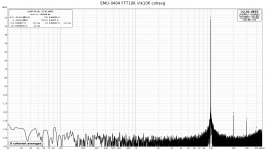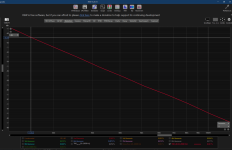I experienced such glitches with my EMU-tracker. After a long and frustrating period of research I found the elephant in the room: These were corroded contacts of rear insert jacks that disrupt the signal path! Plug in/remove several times some TRS-plug - and it works again. As these are totally useless to me, I bridged them with some patchware - problem solved.
Next I will look into replacements for the TRS jacks (back of 1616m and 1820m) and perhaps the RJ45 jack. The RJ45 jack seems corroded and a bit unreliable (needs plug in/remove/plug in sometimes) on one of the repaired interfaces.
In case it helps anyone else with Windows 11 audio dropouts I found a couple of useful resources:
The first is a set of optimization recommendations from PreSonus for Windows 11:
https://support.presonus.com/hc/en-...Optimizing-Your-Computer-for-Audio-Windows-11
The second is a program called "ThisIsWin11" which contains a "de-bloatware" tool:
https://www.techspot.com/downloads/7428-thisiswin11.html
And video on using that tool:
I also look at the task manager app history (total CPU and also total network usage) to identify rogue/bloatware apps that need to be removed.
However with all of that the 2009 HP Z400 is working much better with REW V5.20.13 than the modern Dell. (Even though the Dell is 2x the CPU benchmark, 2x+ the memory benchmark and about 6x the SSD benchmark.)
I don't know how to conclusively prove or disprove this, but I wonder if the problem is the PCI bridge chip that the modern Win 11 compliant Dell has but the HP Z400 does not need due to the X58 chipset.
EMU-0404 (unmodified) feeded by 1k and 10k signal from Viktor's oscillator (unbalanced). REW is running on Orange PI 5 sbc (linux), EMU is powered by battery (cheap DC-to-DC converter, 12V to 5V)
Attachments
Can you post a picture of the DC-DC converter? I ask since they vary considerably in terms of noise and switching frequency.
Ok. I am surprised that the noise is so low with just a regular LM2596 type. I have one so I will try it.
Hi all,
I have become fascinated with using REW as described in this thread, my only experience with it is speaker tuning. I'm up to page 9 but would like to make a decision on my computer and sound card or interface choice sooner than I can read all 76 pages.
I have a pretty decent laptop with SSD and a Steinberg Ci1 USB interface which is 24 bit 48KHz. I also have a selection of 10-15 year old tower PCs and an older M-Audio Delta 66 Omni I/O which is 24 bit 96KHz but needs a dedicated PCI slot so that dictates I use a PC for that. My other option is go out and buy a Focusrite and be done with it, I'm just trying to use what I have on hand.
A little guidance from those of you who have been down this road already would be much appreciated.
Thanks!
Cheers
I have become fascinated with using REW as described in this thread, my only experience with it is speaker tuning. I'm up to page 9 but would like to make a decision on my computer and sound card or interface choice sooner than I can read all 76 pages.
I have a pretty decent laptop with SSD and a Steinberg Ci1 USB interface which is 24 bit 48KHz. I also have a selection of 10-15 year old tower PCs and an older M-Audio Delta 66 Omni I/O which is 24 bit 96KHz but needs a dedicated PCI slot so that dictates I use a PC for that. My other option is go out and buy a Focusrite and be done with it, I'm just trying to use what I have on hand.
A little guidance from those of you who have been down this road already would be much appreciated.
Thanks!
Cheers
I would just use your laptop and the Steinberg for now. For testing amplifiers, it should work fine. After using it for a while, you may want to upgrade. Then, you'll have a better idea of what you really want.
It depends on what you want to do with it.A little guidance from those of you who have been down this road already would be much appreciated.
If you're intending to measure SS amp designs with Herculean distortion specs, you may need a better box. If you're measuring tube amps, perhaps to try to unravel why they sound the way they do, just about any ol USB / Internal sound card will easily reveal that.
Cool beans guys, thanks for the quick reply.
I'll mainly be using it for tube amps and maybe for some of my Pass creations, preamps etc. My son is bringing both the Steinberg and his Focusrite for me to try, he needs the Focusrite back but will leave me the Steinberg. I'd much rather use the USB interface, I just don't need another tower PC running just to use the soundcard. 🙄
Thanks!
PS I was also contemplating one of those Pico Tech 2204A scope interfaces but I think it would be limited in what tests I could make with it.
I'll mainly be using it for tube amps and maybe for some of my Pass creations, preamps etc. My son is bringing both the Steinberg and his Focusrite for me to try, he needs the Focusrite back but will leave me the Steinberg. I'd much rather use the USB interface, I just don't need another tower PC running just to use the soundcard. 🙄
Thanks!
PS I was also contemplating one of those Pico Tech 2204A scope interfaces but I think it would be limited in what tests I could make with it.
Let it be know that an audio interface as digitizer is much better for disto measurements than some Oscilloscope card, which typically gives up bit resolution for sampling speed.PS I was also contemplating one of those Pico Tech 2204A scope interfaces but I think it would be limited in what tests I could make with it.
So after several hours (should have been minutes) I managed to get the 1sr gen Focusrite 18i8 to work in REW. This is just my first attempt using java not ASIO in the settings and running at 16 bit 44.1KHz. I couldn't get the Steinberg operating correctly. I will try tweaking the settings tomorrow but for now, does it look like it's sort of working ok?
Thanks

Thanks
kHz, its easier for others to assess when the setup (electrical and REW) is adequately detailed, and to try and follow an existing example setup used by others in this thread. Eg. do a simple loopback and use no smoothing, and compare to an existing example, then spend some time changing your settings (including aiming to use an ASIO driver) to get to know the soundcard limits and sweetspots, and prepare a comparison summary.
Thanks pinholer, I'm right now just trying to establish that baseline and get all the computer settings correct, REW setup correctly and know what the noise floor is. Imagine we are back on page 2 of the thread, that's where I am on the learning curve. 🤣I'd say you're well on your way. Try measuring the output of a signal generator. Play around.
You should also look at building an attenuator so you can scale down the output of your power amplifiers and also protect the input of your soundcard.
Thanks for the guidance.
Cheers
I was surprised when my HP function generator had more distortion than the output of the sound card, sine driven by REW. But it goes to 80 MHz, while the sound card couldnt do 80KHz. Seems there's tradeoffs.My go to is my HP339A, should suffice.
OK I think I am ready to start playing with external tests, amps, preamps etc. having successfully made a good sweep.
This plot is using my Dell laptop, WIN10 on AC power, in loopback using the internal REW osc. @ 1KHz and 500mV. ASIO 192KHz sample rate with my new Focusrite Solo. I haven't experimented with settings to find the sweet spot but for my purposes, mainly working with tube amps currently, this will suffice. Amazingly low distortion, .00082%, how do they do that? 😱
Are we there yet?
Cheers

This plot is using my Dell laptop, WIN10 on AC power, in loopback using the internal REW osc. @ 1KHz and 500mV. ASIO 192KHz sample rate with my new Focusrite Solo. I haven't experimented with settings to find the sweet spot but for my purposes, mainly working with tube amps currently, this will suffice. Amazingly low distortion, .00082%, how do they do that? 😱
Are we there yet?
Cheers
I tried generating a square wave in REW and using the scope to look at the wave. It's 5KHz 192KHz sample rate 250mV, FR Solo. Is this normal? I have tried running the "calibrate function" a few times which is supposed to remove the effects of the Solo itself, doesn't seem to be working.
Maybe best to use external square wave gen for square wave testing?
Thanks

Maybe best to use external square wave gen for square wave testing?
Thanks
- Home
- Design & Build
- Software Tools
- How to - Distortion Measurements with REW




